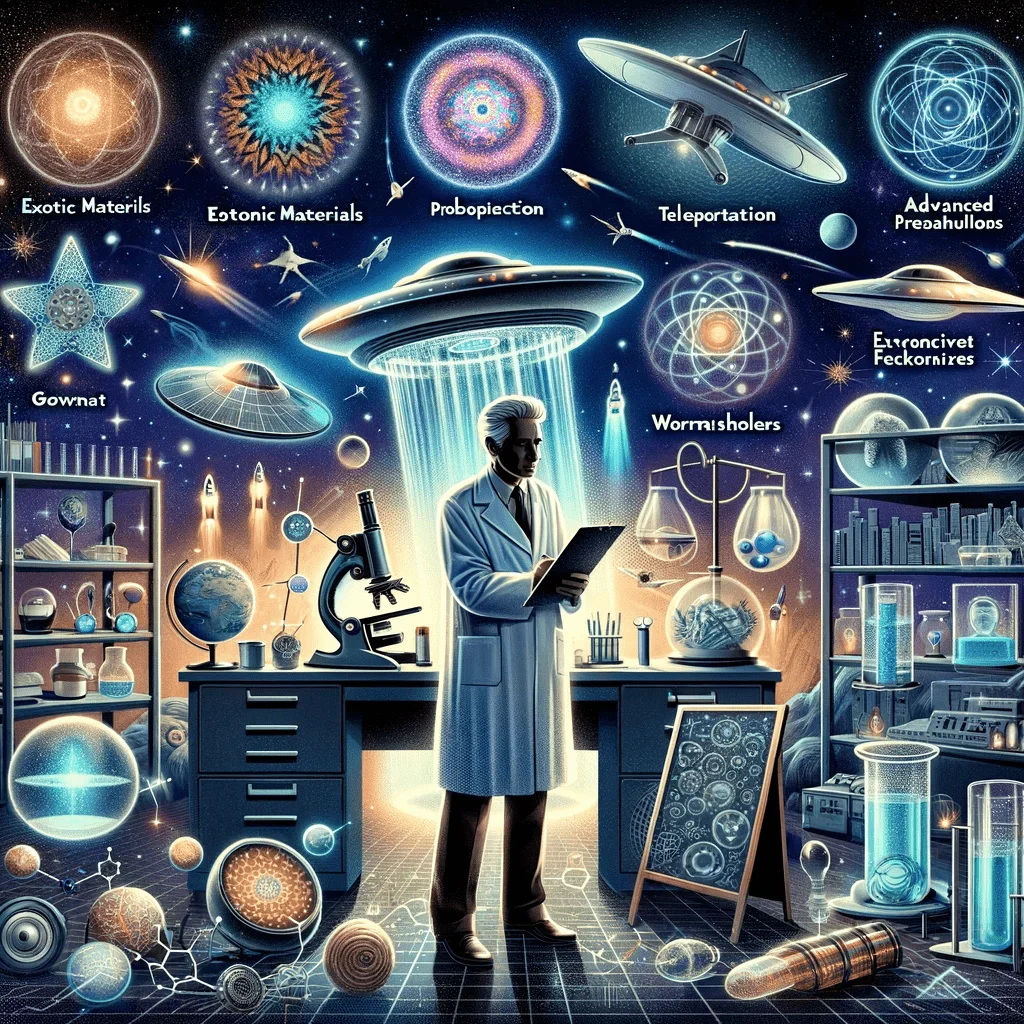Eric W. Davis

Eric W. Davis is a physicist and researcher who is known for his work related to unidentified aerial phenomena (UAP) and UFOs. He has worked for a number of organizations, including the National Institute for Discovery Science, the Institute for Advanced Studies at Austin, and the Aerospace Corporation, and has contributed to numerous scientific publications.
Davis received his undergraduate degree in physics from the University of California, San Diego, and his Ph.D. in astrophysics from the University of Arizona. He has held various research positions throughout his career, including at the Lawrence Livermore National Laboratory and the EarthTech International Institute for Advanced Studies.
Davis has been involved in researching UAP and UFO phenomena since the 1990s, and has authored a number of papers on the subject. He has stated in interviews that he has personally witnessed and studied UAP phenomena, and believes that they are likely of extraterrestrial origin.
One of Davis’ key claims is that the United States government has possession of material from crashed UFOs, which he refers to as “exotic materials.” He has stated that he personally briefed members of Congress on this topic, and that he was told that the materials were being studied by a private contractor on behalf of the government. Davis has also claimed that he has been in communication with extraterrestrial entities, although he has not provided any specific details about these interactions.
In addition to his work on UAP and UFOs, Davis has also conducted research on a variety of other scientific topics, including advanced propulsion systems and high-energy physics. He has authored numerous scientific papers and has been a contributing author to several books, including “Frontiers of Propulsion Science” and “Fast Forward: Future Science Fiction Stories.”
Davis has been featured in a number of media interviews and documentaries related to UAP and UFO phenomena, including the 2020 documentary “The Phenomenon.” He has been praised by fellow researchers and experts in the field for his scientific rigor and approach to studying these phenomena.
Dr. Davis has contributed to a wide range of topics within the field of advanced propulsion concepts and breakthrough physics, continually pushing the boundaries of our understanding of space travel and unconventional propulsion systems.
Here is a selection of some of his key papers along with a brief summary of each:
- “Teleportation Physics Study” (2004): This paper, prepared for the U.S. Air Force Research Laboratory, discusses the concept of teleportation, its underlying physical principles, and potential applications. The study covers a wide range of teleportation approaches, including quantum entanglement, traversable wormholes, and psychokinesis.
- “Warp Drive: A New Approach” (2006, co-authored with Richard K. Obousy): This paper presents a new approach to the concept of warp drive, based on manipulating the space-time metric. The authors propose a warp drive model that requires significantly less energy than the original Alcubierre model, making it more plausible from an energy consumption standpoint.
- “Review of the Field of Breakthrough Propulsion Physics” (2010, co-authored with Marc G. Millis): This paper provides an extensive review of the field of breakthrough propulsion physics, covering the historical background, current research, and future prospects. Topics discussed include faster-than-light travel, wormholes, and advanced propulsion systems based on exotic physics principles.
- “Constraints on traversable wormhole throats” (2010, co-authored with William A. Hiscock and Thomas W. Kephart): This paper examines the constraints on the physical properties of traversable wormhole throats. The authors explore the stability of wormholes, the limitations on their size and geometry, and the energy conditions required for their formation.
- “Optimization of the Interstellar Ramjet” (2012, co-authored with Robert L. Forward and Geoffrey A. Landis): This paper explores the optimization of the interstellar ramjet, a hypothetical propulsion system that could enable interstellar travel by collecting and compressing hydrogen from the interstellar medium. The authors discuss the technical challenges and performance limitations of the concept and propose potential solutions to improve its efficiency.
The Wilson-Davis Memo, also known as the Admiral Wilson Memo, outlines a 2002 meeting between Eric W. Davis and Admiral Thomas Wilson. During the meeting, they discussed the retrieval of extraterrestrial vehicles and secretive government programs aimed at reverse-engineering alien technology. While Wilson has denied sharing this information with Davis, the memo has sparked significant interest in UFO research circles. Davis has neither confirmed nor denied its authenticity due to security clearances. The memo suggests a highly compartmentalized structure around these classified projects.
Clear Audio and Video from James Fox.
Dr. Eric Davis, speaking on May 1, 2025, at the Understanding UAP: Science, National Security & Innovation congressional briefing held in the Rayburn House Office Building in Washington, D.C., stated:
“My interface with the leadership at the industry, which were a number of individuals, is the following. The craft that had been recovered are not of this Earth. They’re not made by human hands. They are not from this planet. They are not human. They are an alien technology. Whatever the word alien means—are they extraterrestrial? We don’t know. We don’t know. What motives do they have? Well, we need anthropologists and social psychologists and philosophers to figure that out because they haven’t communicated that to us. So physicists like me and Avi, we can’t answer questions like. We just need to take data. We call it measurements and signals intelligence in the intelligence industry.”
This briefing was hosted by the UAP Disclosure Fund (UAPDF) in partnership with the bipartisan Task Force on the Declassification of Federal Secrets and supported by the House Committee on Oversight and Accountability. The event aimed to provide lawmakers with a science-first understanding of UAP data and its implications.

